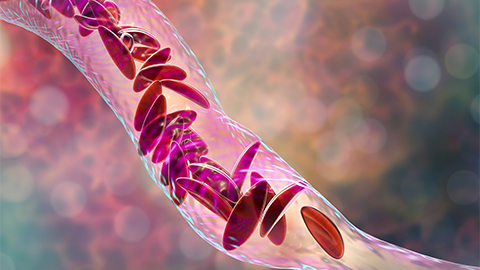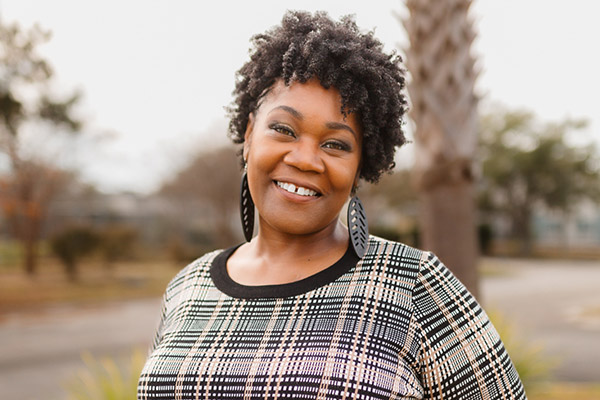07/28/2023

A potential client—we don’t know how old, or how healthy—has sickle cell disease (SCD). There’s very limited information about safe massage therapy in this context. What’s an MT to do?
One option is to reach out to an expert and hope you’ll get a quick but thorough response—if you get one at all. Another option is to check your bookshelf: you might be pleasantly surprised. (And if you don’t own a pathology book, maybe it’s time to remedy that situation—see some options listed below.)
SCD is a complicated and serious condition with lots of decision points for massage therapy: What are the complications, how is the person treating it, and what is their risk for infection?
Listen on for a short primer on faulty hemoglobin, collapsing red blood cells, and implications for bodywork.
Resources:
Pocket Pathology: https://www.abmp.com/abmp-pocket-pathology-app
Textbooks:
Cowen, V. Pathophysiology for Massage Therapists p. 183-184
Salvo, S. Mosby’s Pathology for Massage Therapists p. 231-232
Walton, T. Medical Conditions and Massage Therapy p. 236-237
Werner, R. A Massage Therapist’s Guide to Pathology p. 278-279


[music]
0:00:00.4 Ruth Werner: Hello, I Have a Client Who, listeners. Ruth Werner here, and I'm so excited to let you know that my library of online self-paced continuing education courses has just expanded. I now have a two-hour ethics course called A Doctor's Note is Not Good Enough... And What is Better? This NCBTMB approved course goes into why a doctor's permission or approval or even a prescription doesn't provide the legal or safety protection you might think it does. Then we look at how to start useful conversations with healthcare providers that will actually get us to safe and effective massage for our clients with complex conditions. Visit my website at ruthwerner.com for more information and to register for A Doctor's Note is Not Good Enough... And What is Better?
[music]
0:01:00.1 RW: Hi, and welcome to I Have a Client Who, pathology conversations with Ruth Werner, the podcast where I will discuss your real life stories about clients with conditions that are perplexing or confusing. I'm Ruth Werner, author of a Massage Therapist Guide to Pathology, and I have spent decades studying, writing about, and teaching about where massage therapy intersects with diseases and conditions that might limit our clients' health. We almost always have something good to offer, even with our most challenged clients, but we need to figure out a way to do that safely, effectively, and within our scope of practice. And sometimes, as we have all learned, that is harder than it looks. The question in today's I Have a Client Who story is short and to the point, although lacking in a lot of detail and it goes like this. Hello, I was advised to contact you about a specific pathology. I have a potential client with sickle cell, but I wanna learn as much as I can to better serve them. I didn't find any information on your main website and was wondering if you have experience with working with clients with this illness or insight about modalities and contraindications that could help. Well, I appreciate that this contributor checked my website. That's at www.ruthwerner.com by the way, and you can click the author button and go to articles.
0:02:28.4 RW: There's a complete searchable database of everything I have ever published that is available online and I checked, this contributor is correct. There's nothing on sickle cell disease to be found there. However, I also want to point listeners and other people who wanna ask me pathology questions to a few other possible resources. I wrote a book, it's a pretty good book. It's called A Massage Therapist's Guide to Pathology, and it's published by Books of Discovery and it's not your only option. There are some other pathology texts written for massage therapists out there too. Mosby's Pathology for Massage Therapists by Susan Salvo, Pathophysiology for Massage Therapists by Virginia Coen, Medical Conditions and Massage Therapy by Tracy Walton. Every one of these books has a section on sickle cell disease. I checked and this kind of resource is a great starting point in your quest for information. So gentle listeners, if you need to find something relevant and trustworthy and you can't find it online, maybe revert to the analog world and see if your textbooks have anything to offer you. Now I can imagine your eyes are rolling and I can hear you muttering. Okay, boomer from here. But I'm just saying just because it's on paper doesn't mean it's not useful. And that's all the geezer ranting I will do for now. Let's talk about sickle cell disease, shall we?
0:04:00.5 RW: I'm going to share a summary of what it says in my book and I'll fill that out with some other information that is timely and relevant, but this hasn't really changed a great deal. Sickle cell disease or SCD is an autosomal recessive genetic condition. That means a child must inherit the key genes from both parents to develop this problem. This is a genetic malfunction that causes the production of abnormal hemoglobin molecules. They cause the red blood cells to collapse into a characteristic sickle shape and they can get caught in tiny capillaries and cause clotting and organ damage and a bunch of other complications that I'll get to in a minute. But let's back up for a moment and reacquaint ourselves with hemoglobin and its relationship to red blood cells. Hemoglobin is a protein. Part of the structure of hemoglobin are sites called heme, that's H-E-M-E, which is where we find their key ingredient, Fe, otherwise known as Iron. And iron is really, really good at carrying oxygen. Healthy red blood cells are absolutely loaded with hemoglobin. Remember these red blood cells are born in the bone marrow and they circulate through the body and they use hemoglobin to pick up oxygen in the lungs and deliver it everywhere else. Then at that key moment at the delivery site, oxygen can detach from the hemoglobin and travel into the body cells that need it.
0:05:38.4 RW: And this all sounds really simple, but there are a lot of things that can go wrong with this process and oh my goodness, so many tangents that I can't explore right now. I have a whole little skit about carbon monoxide and I just must not are okay, Ruth, get back on track. So hemoglobin fills up our red blood cells so much that a healthy, mature red blood cell doesn't even have a nucleus. It has surrendered its nucleus to make more room for hemoglobin. A normal red blood cell goes through this process of picking up oxygen in the lungs and delivering it somewhere else about once a minute from the time it enters the bloodstream and ongoing for about four months. And at that point it's pretty worn out and it is pulled out of the bloodstream by the spleen. Parts of the red blood cells are recycled and sent to the liver to be turned into bile and oh my goodness, there's another tangent to avoid. And all those dead red blood cells that were pulled out of circulation today, thankfully were replaced by an unending production line. That's all happening in healthy bone marrow. It's amazing unless something doesn't work right, for instance, what if the machinery in the bone marrow turns out faulty hemoglobin? And what if those hemoglobin molecules instead of happily carrying oxygen from the lungs to our gasping cells, what if all those hemoglobin molecules disintegrate after about 10 days and that makes the whole red blood cell collapse?
0:07:22.3 RW: And what if those collapsed now sickle shaped remnants of red blood cells then get stuck in various places in the cardiovascular system. This is sickle cell disease. As we said, this is an autosomal dominant genetic disorder. A person must inherit the faulty gene from both parents if they inherit only one. This is called the sickle cell trait. They can pass that trait onto a child, but they don't have the disease. Sickle cell disease is highly associated with some specific ethnicities, blacks, Hispanics, and people from the Mediterranean, from Italy, Greece, Turkey, parts of the Middle East and Northern Africa. These people have the sickle cell gene more commonly than other ethnicities. We think about a hundred thousand Americans have sickle cell disease and an unknown number are positive for the sickle cell trait. A person with sickle cell disease develops it early, often in childhood. They're likely to have a lot of pain and poor stamina and shortness of breath. Think about all that oxygen that is not being carried to the cells. Plus they're anemic because their red blood cells are dying much faster than they can be replaced. Complications of sickle cell disease include all kinds of difficult things.
0:08:48.7 RW: A sickle cell crisis happens when a clump of sharp sticky cells stimulates the growth of a blood clot blocking flow to downstream tissues. We've just described a type of infarction. We usually associate this with something like a heart attack, but it can happen anywhere and even young children can have an ischemic that is clot caused/due to sickle cell disease. Sickle cell is especially hard on the spleen, which has to filter out all those damaged red blood cells and on the liver, which has to process all those leftovers and on the kidneys, which have to try to keep up with waste excretion. And this can all result in liver damage with gallstones and kidney damage and spleen damage. Spleen damage is serious because it means our largest and most important lymph node is now out of commission. People with sickle cell disease are at risk for serious secondary infections and the leading cause of death for children with sickle cell disease is pneumonia. There are several other serious complications, but this is enough to get us going for now because this is a genetic disorder, there's no reliable cure for sickle cell disease. Some patients have had good luck with stem cell transplants to fix their red blood cell production from the bone marrow. This is a very risky procedure and it's not a good fit for many patients.
0:10:16.6 RW: For most people, treatment focuses on keeping the person as pain-free and functional as possible, mainly by trying to limit those sickle cell crises and infarctions. There's a cancer drug that slows this process, but it's safe only for older patients. So let's think for a minute about working with a client who has sickle cell disease. Let's assume that they are an adult and let's make possible lists of risks and benefits. What risks can you think of? I'm thinking about tiny blood clots all over the body, but especially in the extremities and pain that careless massage might make worse. Plus maybe kidney and liver damage and immune system compromise and the risk of secondary infections. These clients might also be using pain medications and other meds that might have to inform some decisions. So that's another factor we have to consider. And all of this to me seems to rule out any kind of work that might disrupt those delicate tissues that are probably not super resilient, especially since the blood cells might be pointy and not smooth. Are there any benefits you can think of? I can, I'm thinking about pain relief and gentle holds to bring loving attention to painful areas. Any pain-free massage that is within the person's normal daily activities seems possible with respect for infection control, of course.
0:11:47.1 RW: Can you envision what your session with a person who has sickle cell disease might look like? Can you think of a list of some screening questions for their safety and your effectiveness? Like what kinds of complications do they have and what are those complications, repercussions in their activities of daily living? How are they treating their sickle cell disease and are they having any side effects for their meds? And most importantly of course, what are their goals for massage? It turns out that people with sickle cell disease love massage. Our work is very popular among patients and the parents of children who have this disease. And massage seems to be especially helpful for issues like pain and anxiety and depression as long as it can be done safely, what a gift to be able to bring to someone whose life is otherwise so very challenging. This short little discussion just scratches the surface of the sickle cell disease issue, but it should give you enough information to have a good conversation with your client to set some realistic and safe goals for your work together. Contributor, I'm glad that you asked for some input and for times when I can't reply to someone right away, please don't forget to check your textbooks.
0:13:10.9 RW: Hey everybody, thanks for listening to, I Have a Client Who, pathology conversations with Ruth Werner. Remember, you can send me your, I Have a Client Who stories to ihaveaclientwho@abmp.com, that's I have a client who, all one word, all lowercase, @abmp.com. I can't wait to see what you send me and I'll see you next time.
[music]





